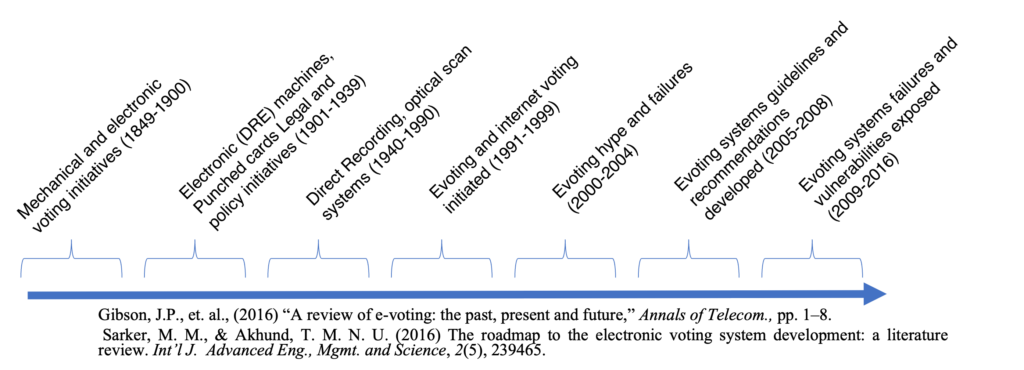Voting systems are a problem space that matter to humans because of the actions required of participants, and the impacts of voting decisions. Reports of unauthorized voting, of possible election interference by foreign powers, of voter disenfranchisement, and of technological failures call into question election integrity. Automated voting systems promise efficiency and improved accuracy. This improvement comes from elimination in the electoral processes of humans that may be error prone, or otherwise biased. Information, computing, communication and connectivity technologies offer capabilities that are not leveraged by existing paper voting systems.
Maybe it is time fore some outside of the box thinking. Suitable electronic systems may enable other democratic forms beyond representative democracy or direct democracy. From the perspective of an existing voting process, blockchain voting systems are an example of digital transformation. Transforming voting is also subject to a number of risks or threats regarding political exclusion, legitimacy issues, identity and privacy/ secrecy concerns.

Roadmaps as a retrospective provide the opportunity to learn from past mistakes. But, the main value of prospective technology roadmaps, is as a decision aid in developing the technology. Such roadmaps identify the sequence of evolutionary technology improvements needed. Community engagement and recognition of roadmaps as emergent rather than centrally planned are key.
Deployments of new voting systems by election organizers is easier in “greenfield” situations. This is because existing voting procedures do not need to be displaced. Election organizers have used a variety of different implementation and delivery models for other voting systems. These implementation and delivery models could be applied by election organizers for a blockchain based voting system as well. A blockchain voting system could be designed for a single organization. An alternative design might prefer a single instance be usable by multiple organizations. The designer of a blockchain voting service could offer it “as a Service”. The Service hides the implementation details. Alternatively, the developer could build on an existing blockchain infrastructure where the blockchain implementation is explicit.

Roadmaps can provide a decisional framework; and identify milestones to determine progress. Roadmaps with fewer dimensions help to concentrate efforts to improve performance in those dimensions. Roadmapping can help clarify the different areas where blockchain voting systems may be more easily implementable and deployable. Blockchain voting systems targeting market based or corporate governance may be more tractable in the near term. Establishing broader consumer familiarity with the technology may eventually lead to use in political governance. To read further a lengthier published article is available : Towards a Blockchain Voting Roadmap
Whether you are a researcher, business professional, or social entrepreneur, the solutions you develop to the problems that you face matter! Framing and reframing the problem from different perspectives can enable you to see past constraints. These constraints may not exist from a different perspective. Developing a client-centric, solution-agnostic problem statement can enable the needed creative thinking.
If you need help bringing the power of perspective to your clients’ needs problem statement contact me.
